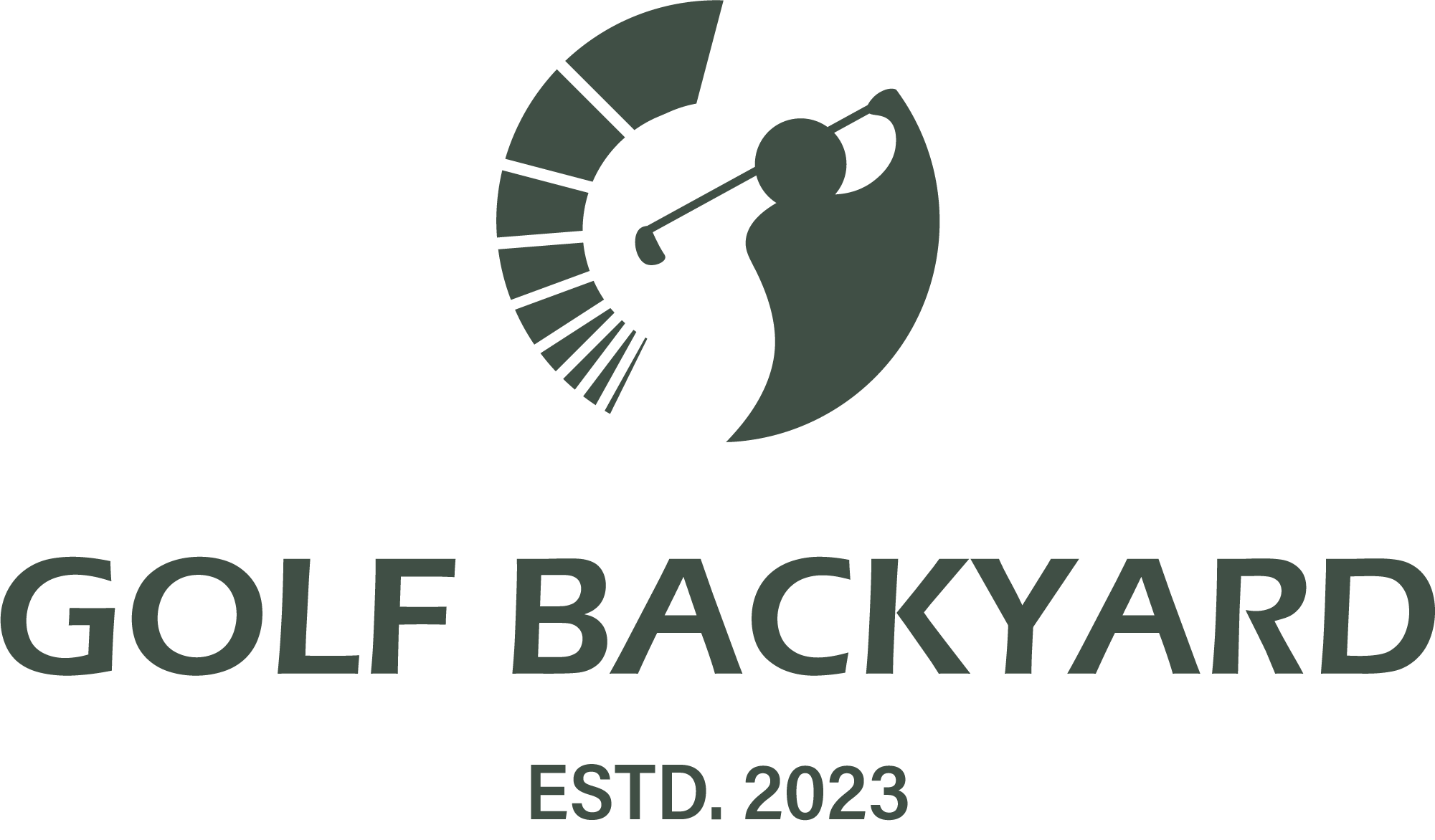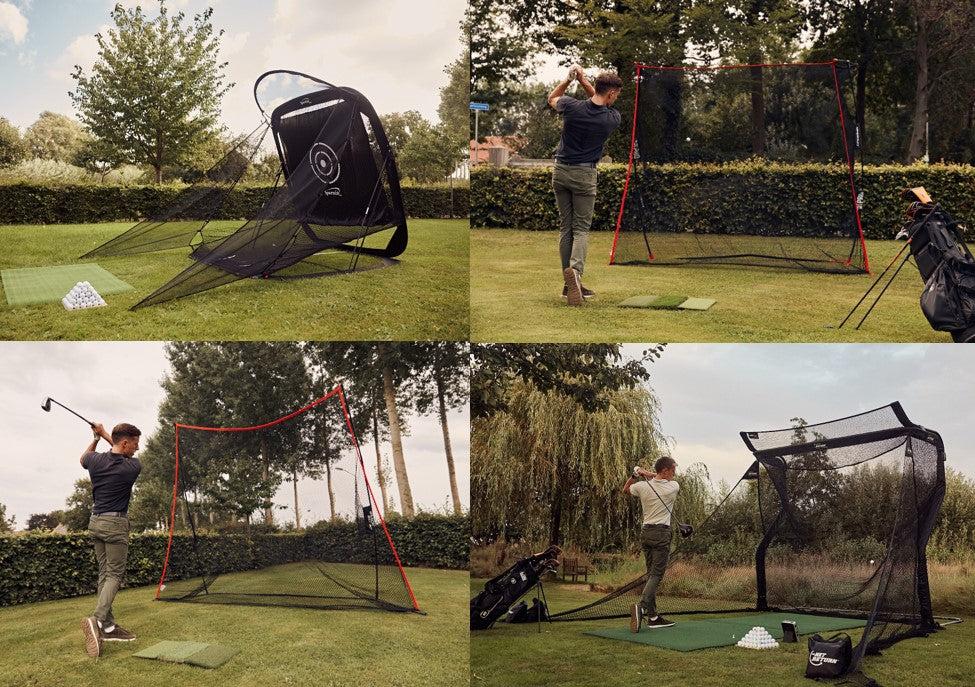Are you starting to play golf at home and are you wondering which golf mat is the most suitable for your home golf setup? Then read this article; it lists the properties of a number of golf mats so that you can make a well-considered choice. We will discuss the advantages and disadvantages of golf mats, the dimensions, different types of golf mats and finally the price.
Benefits of playing golf at home with a golf mat
- First of all, you don't damage your lawn. Unfortunately, most home golfers don't have such a beautiful long strip of grass as at the Eindhoven golf course. So you'll soon have to go looking for a good teeing mat.
- In addition, with a golf mat you get the same position every time. This allows you to work specifically on your game without different positions. For example, if you want to work on your ball positioning; place a tour stick perpendicular to your target line and take your stance. Outside with grass, you would have to move the ball after each shot because of the divot, which means you also have to move the tour stick continuously.
Disadvantages of playing golf at home with a golf mat
Unfortunately, golf mats also have a number of disadvantages compared to real grass.
- Golf mats can tend to be harder on your clubs and your body. A firm mat can be harder on your wrists during a long practice session. The steeper your swing, the more this will be the case.
- In addition, golf mats are more forgiving than grass - especially on shots that are hit thickly, as your club digs in less.
- Finally, golf mats can affect ball flight somewhat. The biggest numbers affected are spin and launch angle.
The dimensions:
Now that we've talked about the pros and cons, let's talk about the dimensions. Almost every driving range golf mat you see on the golf course is 150cm x 150cm. When you're going to hit with your driver, you need about 90cm to 110cm of width.
You can also choose to place the golf ball on a mini-mat . Then you stand on grass or a hard surface. But this has some disadvantages :
- You turn less comfortably; this affects your swing
- A mini mat shifts a tiny bit after each swing
- Higher risk of injury
However, a mini mat also has advantages :
- This is a good alternative, especially if you want to chip.
- Or if you want to try out golfing at home; even if you buy a professional teeing mat later, you will still benefit from the mini mat.
Finally, sometimes two driving range mats are chosen. This way, the entire section in front of the golf net is covered, for example. However, in our opinion, this is not necessary; you always only hit from 1 and at the DIY store you can buy artificial grass which gives the same effect but for 1/4 of the price.
Type of golf mats
3-layer golf mat
 A 3-layer golf mat consists of: turf + interwoven nylon fibers + rubber. The intermediate layer provides extra shock absorption which reduces the chance of injuries/pain. However, there are a number of reasons why you will not find this golf mat at Golf Backyard:
A 3-layer golf mat consists of: turf + interwoven nylon fibers + rubber. The intermediate layer provides extra shock absorption which reduces the chance of injuries/pain. However, there are a number of reasons why you will not find this golf mat at Golf Backyard:
-
 A 3-layer golf mat is very expensive (more than €350)
A 3-layer golf mat is very expensive (more than €350) - They cannot be rolled up, which means they have to be shipped on a pallet (even more expensive).
- If you put a 3-layer golf mat on the ground without a “matkeeper”, you will feel it slide slightly because of the nylon. And unfortunately, a matkeeper also costs €250 extra.
2-layer golf mat

It consists of turf + rubber. Nowadays, almost every tee mat you encounter on the driving range is 2-layer. This is because the rubber layer has improved significantly compared to a few years ago. At that time, only golf mats with EVA foam were available. That was stiff, firm and could not be rolled up. That is probably why 3-layer golf mats with an intermediate layer came onto the market.
Nowadays, most 2-layer golf mats have NBR foam underneath. This is much more flexible, springy and rollable. These golf mats can be found almost everywhere on the driving range and can also be found at Golf Backyard.
In addition, NBR foam has another major additional advantage; NBR golf mats do not curl . Rubber shrinks in extreme weather conditions or temperature changes. NBR has a much lower shrinkage ratio than EVA foam. This ensures a longer lifespan.
Price
A good driving range mat will easily cost €200. This is due to a number of factors. The rubber NBR base layer costs around €4 per kilo. On top of that comes the peat, which has to be burned at a high temperature and also costs a few tens of euros per square meter. The peat is then stitched onto the rubber with machines. In addition, the shipping of these heavy and large items is far from optimal; not only high freight costs but also large package surcharges. Finally, rolling up/packing a sturdy golf mat takes a few minutes, which makes a professional driving range mat an expensive purchase.
On the other hand, you do get value for your money at Golf Backyard. The professional driving range mat is extremely popular and a teaching version has recently become available. These driving range mats both have an NBR foam base and will last for years.
Are you about to buy a golf mat after reading this article? Then use the discount code "driving-range". Then you will be hitting your balls from a great teeing mat within a few days!



